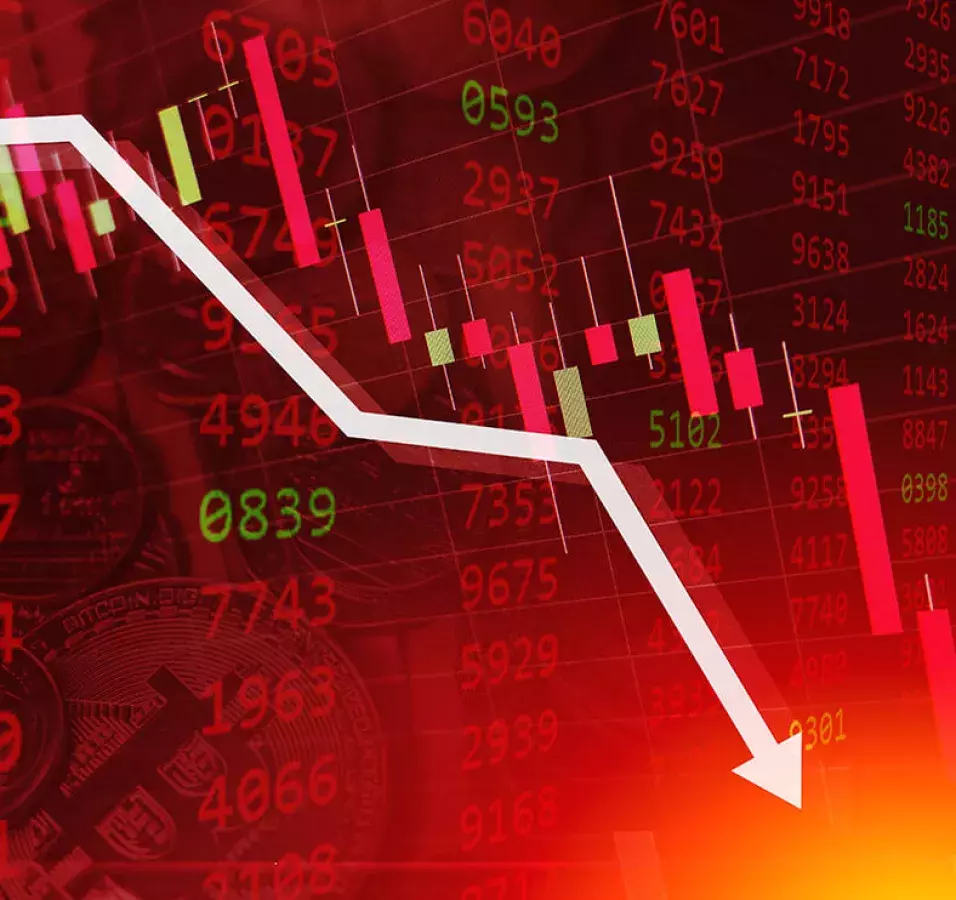
Q&A: Insights for reopening economies
The COVID-19 pandemic brought the global economy to a virtual standstill as many governments placed varying restrictions on day-to-day business and activities in order to prevent the spread of the deadly virus. As economic woes increase, many governments are reopening and struggling with how best to resume business activity while maintaining health and safety.
Alessandro Rebucci, an economist and associate professor at Johns Hopkins Carey Business School, has analyzed the impact of current health interventions to stop COVID-19 as well as lessons learned from previous economic crises. He offers important insights for policymakers.
QUESTION: Your research looks at the effectiveness of voluntary and mandatory social (spatial) distancing measures. What did you find?
ALESSANDRO REBUCCI: In a recent paper, together with my coauthors, Hashem Pesaran at the University of Southern California (USC) and Alexander Chudik at the Federal Reserve Bank of Atlanta, we studied whether voluntary self-isolation could flatten the epidemic curve as effectively as mandatory interventions.
In our study, we assumed that individuals trade off the benefits of reduced risk of infection with the cost of lost income net of any government support and their personal aversion to self-isolation. We found that the infection risk had to be quite elevated in order to outweigh lost income and aversion to self-isolation. As a result, individuals and politicians who internalize their preferences choose social distancing only when the epidemic risk is already high, and it is too late to flatten the curve effectively.
Unfortunately, this is very much what we witnessed in the United States, where not much was done in terms of mandatory social distancing until it was too late, and individuals and businesses were left to decide for themselves what best course of action to take.
In the U.S., federal guidelines were not introduced until March 16, 2020, when confirmed cases had already surpassed 3,000. By contrast, China imposed a draconian lockdown right after the outbreak in Wuhan, the epicenter of the COVID0-19 epidemic. These measures included suspending all leisure and non-essential business activities, with strict neighborhood monitoring of compliance neighborhood by neighborhood. The epidemic peaked in about a month with very few infections and deaths as a share of the population, and eventually cease to pose an acute risk in another 30 days or so. Today, China is fully open for business and has not shown significant evidence a second COVID-19 wave. Of course, China is a very different country, but the value of life should be universal.
40–50%
Amount that economic activity might have fallen across the United States during the lockdown.

Q: Many governments, including some U.S. states, are taking steps to loosen restrictions to resume economic activity. What are the benefits and risks of loosening restrictions?
A: We know that keeping the economy closed is costly. In the research we are conducting at Carey Business School, we are looking a high-frequency indicators based on cell-phone tracking data. Our analysis suggests that economic activity might have fallen as much as 40 to 50 percent across the United States during the lockdown period. Keeping the economy closed affects the lifetime income and wealth of people that might eventually cost lives over the years due to the health implications of unemployment and poverty. However, we also know that reopening prematurely will surely kill people, as well as delay the eradication of the disease and prolong the very deep ongoing recession.
Q: Should jurisdictions allow people and businesses to resume activities freely, or should authorities continue to regulate strictly economic and social interactions, keeping mandatory interventions in place?
A: Soon authorities around the world and in the U.S. will be facing the same dilemma. The epidemic curve has plateaued but not gone away. It is stubbornly staying at the peak. In light of the tremendous and persisting uncertainty surrounding the biology of the virus and medical risks involved, it is admittedly hard for any policymaker to make the right choice. The right thing at this point is to reopen, cautiously and gradually, as soon as the epidemiologists and the local medical experts advise that it is safe to do so.
The experience of other countries is too diverse to provide definitive answers. Sweden was the only country which did not impose any mandatory social distancing and, of course, they are doing better than most economically. Surprisingly, it is also in the middle of the pack in terms of officially reported cases and deaths as a share of the population, but it might well be only because not much testing is taking place. In any case, it is very far from herd immunity, so only time will tell.
Germany took a yet different approach. It started to boost medical capacity to cope with COVID-19 dramatically in January and it adopted mild social distancing policies. Notably, it also brought health care services to COVID patients rather than bringing patients to infected hospitals, as in Italy. Both its epidemic and the recession curves are the best in Europe, Yet, Germany is facing new challenges as it starts to reopen.
These experiences suggest that reopening the economy is possible, but it requires strategy, planning and coordination. As ongoing research at Carey Business School with colleagues Vadim Eleney, Luis Quitero, and Emilia Simeonova shows, coordination is particularly important to avoid that early-reopening jurisdictions trigger negative health spillovers onto neighboring ones, which could hamper efforts to kick-start regional economies.
In general, lifting the restrictions on less risky segments of economic and social activity and making sure that reopening stays behind the epidemic curve is a good recipe to avoid the potentially even more violent second wave we saw during the Spanish flu pandemic and further damages to the economy.
“What businesses and costumers need to return to normalcy is safety and certainty that the health risks have been brought under control. Until then, it is difficult to see how we can go back to the new normal with adjustments here and there.”
Alessandro Rebucci, Associate Professor
Q: If social distancing restrictions are lifted, will it actually have a positive impact on the economy?
A: It will certainly bring some relief to businesses and workers. This is however bound to be insufficient to go back to the new normal, whatever that will be. It is cold comfort to restaurant owners reopening at a maximum of 25 percent capacity. It means giving them a “bankruptcy” sentence. Moreover, China shows that even after successful eradication of the virus and full reopening, scarred costumers still don’t go back to their normal patterns of expenditure, because the epidemic risk is currently perceived extremely high and dominates all other considerations.
What businesses and costumers need to return to normalcy is safety and certainty that the health risks have been brought under control. Until then, it is difficult to see how we can go back to the new normal with adjustments here and there, relative to our pre-covid19 consumption habits and business models.
Q: Assuming that some sort of social distancing measures will remain in place for the long-term, how do we strike the right balance to resume economic activity?
A: We will not have social distancing forever. The so called “Spanish Flu” that came toward the end of World War I in three waves, lasted three years. A vaccine for COVID-19 will likely be developed soon. In the meantime, we absolutely need to avoid a deadly second wave, at any cost. Social distancing targeting high personal interaction activities, testing, tracing and isolating infected individuals must continue. There is a very large body of research suggesting that these tools can continue to flatten both the recession and the epidemic curves.
A good point of reference is September 11, 2001. There was a strong immediate response, followed by more thought-out efforts to address the underlying cause and consequences of such a shocking event. Even though it took some time, eventually we went back to flying, and today we are all adjusted to a very different security regime. For COVID-19 it will take longer, and the economic impact will be much more widespread and pervasive. But we will go back to travel for leisure and essential business. We will go back into the classroom. We will go back to a new normal.
Q: In other recent research work, you’ve compared the current COVID-19 pandemic to a “sudden stop” crisis similar to what emerging markets often face or the 2008-09 Global Financial Crisis. How does this economic crisis compare to the financial crises that economists studied extensively over the past 10 years or so?
A: We refer to financial crises as “sudden stops,” referring to the sudden interruption in the flows of credit to households and firms that happen when financial intermediation is disrupted by evaporating liquidity or insolvency. Because of lack of credit, economic activity— already falling by the triggering shock, for example a negative energy price shock, or the bursting of an asset price bubble — shrinks mush faster and much more.
The COVID-19 is a sudden stop in economic activity itself, triggered by mandatory and voluntary social distancing for fear of lethal infections. The halt to economic activity is imposed to help contain the epidemic; it is not the result of firms, consumers, and bankers’ decisions driven by other causes. The ensuing collapse in aggregate demand and supply is almost instantaneous and necessary.
In the process, and inevitably, the crisis also triggered large financial market gyrations and panic. However, the Fed intervened early, aggressively and massively and was successful in avoiding the compounding effects of a sudden stop in credit flows.
Because of this fundamental difference, some economists continue to expect a fast rebound and recovery as soon as social distancing is lifted or the epidemic goes away, a so-called V-shaped recovery. However, the COVID-19 crisis is wiping out entire industries such as travel, retail, and entertainment, with cascading effects through the labor market and the supply chain. For other industries it is still too early to assess the damage, as in real estate and health care. Bankruptcies are rising very rapidly. So the sudden stop in activity is starting to give rise to insolvency. Economic relation between customers and business have been severed, in some cases, permanently. Thus far, mostly workers in the sectors most affected have been fired or furloughed. But layoffs at blue chip companies are growing. Many of those jobs will not come back. It will take many years for the millions unemployed to find new jobs. It will take a very long time to go back to normal, and it will be a new normal. Reopening an infected economy is no short cut.
About Our Experts

Alessandro Rebucci is an Associate Professor in the research track, holding a joint appointment with the Economics Department of the Krieger School of Art and Science. Prof. Rebucci is a NBER Faculty Research Fellow (International Finance and Macroeconomics Program), a CEPR Research Fellow (International Macroeconomics and Finance Programme), and a Research Fellow at the Center for Urban & Real Estate Management, Globalization of Real Estate Network (University of Zurich) and the Centre for Applied Financial Economics (University of Southern California).


